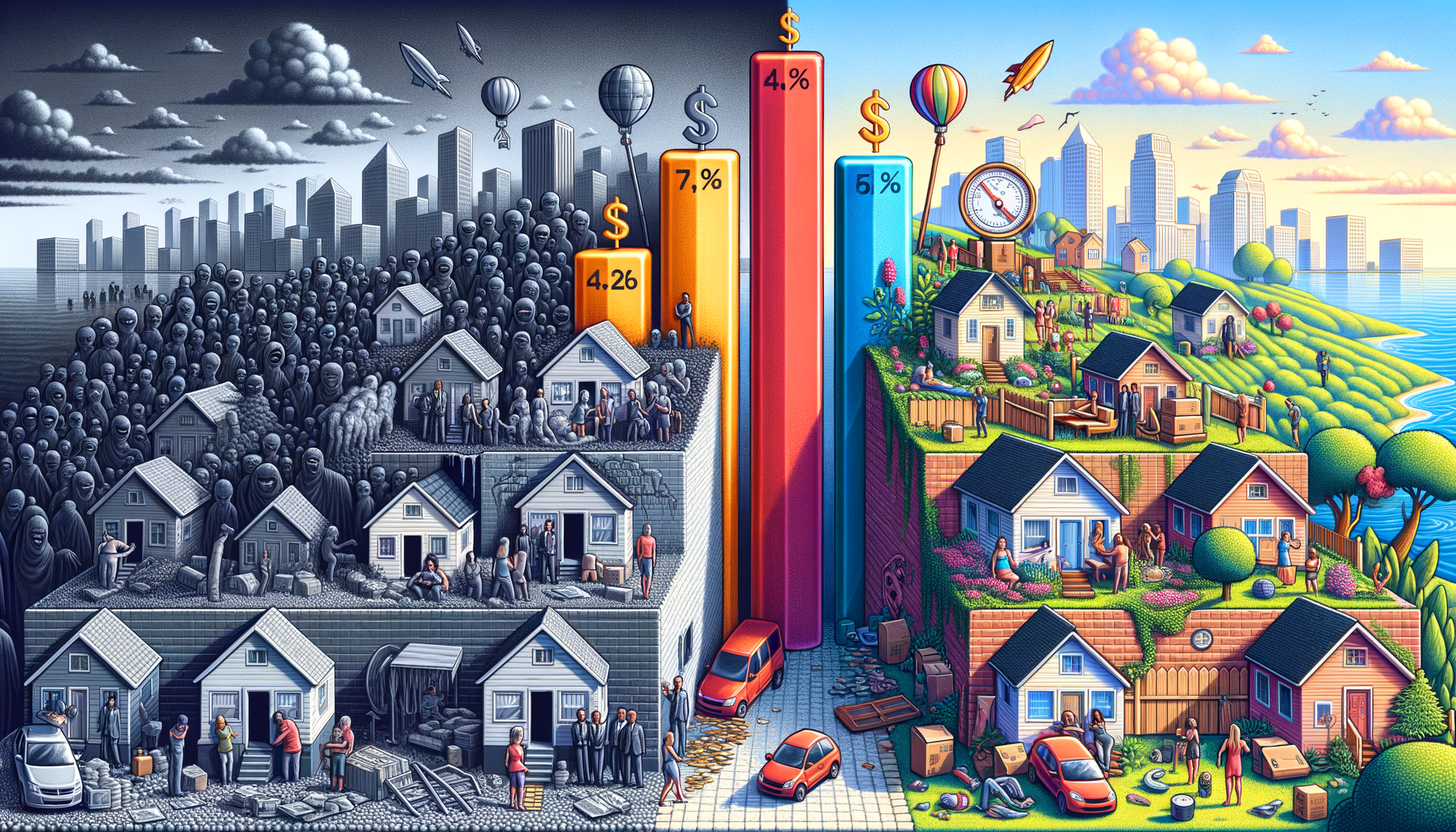“Forecasted Dip in Mortgage Rates: Fannie Mae’s Optimistic Outlook for Year End”

As per recent predictions made by leading financial institutions, US mortgage rates, which have seen recurrent fluctuations in recent times, are set to drop below 6% by the close of this year. This forecast has rekindled the ray of hope among homebuyers and investors as it alleviates the high cost of lending, thereby fueling the housing market demand.
The US housing market has been facing an uphill battle, and finding a solution has proven to be a difficult task for the financial institutions and policy makers. However, the predicted sub – 6% mortgage rate could trigger a significant quantum leap in the real estate sector.
Mortgage rates are an intricate and integral aspect of real estate as they play a pivotal role in determining the cost of home loans. This rate is influenced by various factors, including economic climate, market trends, and monetary policy. A higher mortgage rate increases the cost of borrowing and results in substantial installment payments, thus affecting the affordability of homes for prospective buyers. On the flip side, a lower rate boosts the affordability, thereby encouraging more individuals to acquire loans and invest in real estate.
In terms of numbers, the mortgage rates in the United States fell from about 7.16% in 1990 to 3.94% in 2020; a reflection of nation-wide financial policies and varying economic scenarios. The predicting of a slump to below 6% by the end of current year shows a sliver of much-needed hope in what can be described as uncertain times for the housing market.
Basis of the Sub-6% Mortgage Rate Projection
Financial institutions steadily monitor various factors before predicting changes in mortgage rates. These indicators include the nation’s inflation rate, the Federal Reserve’s monetary policy stance, and global economic developments.
In the case of the anticipated sub-6% mortgage rate, the arguments put forth are quite thorough. The Federal Reserve has expressly stated its commitment to keeping interest rates low, intending to stimulate economic growth. Additionally, the COVID-19 pandemic has had a profound impact on the global economy, pushing reserve banks across the globe to reduce rates and incite economic momentum.
With inflation well under control in the United States and the Federal Reserve’s commitment towards a low-interest-rate policy, financial institutions foresee a fall in mortgage rates. However, this prediction isn’t universally accepted as some economists have their reservations, arguing that growing global economic uncertainties may cause mortgage rates to swing unpredictably.
Economic Impact of Lower Mortgage Rates
The sub-6% mortgage rate could usher in a wave of change in the American economy at large. This potential reduction in mortgage rates is expected to increase the housing sector’s demand, prompting potential buyers and investors to get their hands on home loans. Increased demand for housing will, in turn, boost other interconnected sectors such as construction, home goods manufacturing, and real estate services.
Further, lower mortgage rates can stimulate the economy by encouraging consumer spending. Households that refinance their mortgages at lower rates typically have more disposable income, potentially influencing an increase in consumer spending, one of the key drivers of economic growth.
Further, lower mortgage rates may also lead to an upturn in business investments. With low-cost loans, companies may invest in expanding operations or increasing their capacities, creating job opportunities, which eventually grapples with unemployment issues.
The Downside of Sub-6% Mortgage Rates
While a drop in mortgage rates could help address many financial challenges, it is not a silver bullet solution. Low mortgage rates could lead to a surge in demand in certain soaring real estate markets, which, in turn, could raise overall home prices.
Moreover, as people refinance their existing home loans to take advantage of lower interest rates, lenders may see a shift in their revenue streams. The profitability of banks could potentially be impacted due to a decrease in their mortgage income. Therefore, while low rates can be beneficial to consumers, they might pose challenges for lenders.
Mitigating Strategies
To counter the repercussions of lowered rates, lenders could adopt strategies to hedge the risks. This could include diversifying their loan portfolios and offering a flexible range of mortgage products to cater to different demographic groups. Additionally, the lenders could explore opportunities to build stronger connections with customers, thereby fostering customer loyalty.
Conclusion
In the wake of turbulent global economic conditions, the anticipated sub-6% mortgage rate is a beacon of optimism. Lowering mortgage rates could usher remarkable changes in the American housing market landscape and the wider economy. As these ripple effects stimulate economic growth, they bear the potential to turn around the current challenging economic scenario. However, it is equally quintessential to tread with caution, for while the benefits are apparent, the hurdles are equally formidable. The path lies in striking a balance, mitigating risks, and capitalizing on opportunities as they unfold.
